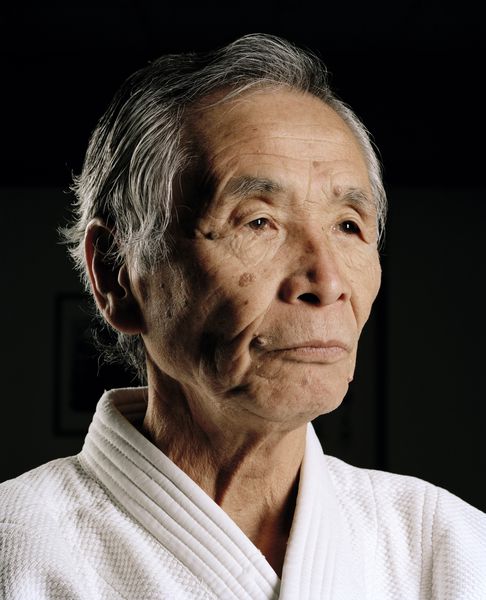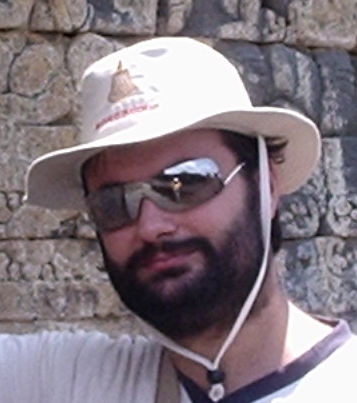El Maestro Tamura nos dejó anoche día 9 de Julio de 2010 a las 19:00. Sin duda una muy triste noticia para el Aikido español. Descanse en paz, Maestro.

Lives and Travels of a Stone Age Aikidoka, here, there and everywhere. Working around the world...
 Alejandro Villanueva (Flintstone)
Alejandro Villanueva (Flintstone)In my (little) free time, I enjoy spending time with my little family, reading all kind of literature and chatting with friends in front of a coffee. Also traveling and knowing other people's cultures is a big interest of mine. After working for five years as a Project/Site Manager in Pulp & Paper companies, and playing with IT for a big while, I'm moving to manage a startup in Gas Technologies... Read More


El Maestro Tamura nos dejó anoche día 9 de Julio de 2010 a las 19:00. Sin duda una muy triste noticia para el Aikido español. Descanse en paz, Maestro.

Hoy toca llamar la atención sobre un hilo creado por David Orange, de la Yoseikan y uchideshi de Minoru Mochizuki, en Aikiweb. Este es el enlace original de lo que copio aquí.
I had what I think was a real breakthrough in understanding this weekend.
My Sensei once told me that aiki is the ura (reverse or unseen side) of kiai.
I always took that to mean that aiki is a response to another person's kiai attack: you adhere to the ura of his movement.
But this weekend, I realized that I have kiai, myself, and that aiki is the ura of my own kiai.
If you consider the properties and nature of kiai, in yourself, what could be the ura of that?
My understanding of kiai is that it's not the shout but the spirit of attacking. The shout is like a shadow or sound of kiai. Like the sound of a gunshot is not the gunshot, but an effect of the gunshot. The kiai is not the gunshot or the bullet or the sound: it's the intent to shoot, and the action of pulling the trigger. In unarmed fighting, it's the intent to smash the other guy.
For empty-hand, knife or sword, kiai means crossing the gap and blasting through the opponent, knocking him down or impaling him on the sword.
So how could aiki be the ura of that?
I conceived that it would be not crossing the gap or putting your power into the opponent, but holding your ground immovably and letting him run into your sword (or fist) with his kiai attack, so that all his own power (not your power) goes back into him.
Kiai is putting your power into him: aiki is turning all his power back to himself, without moving, by letting the ground receive and support his force. And that would be what Mike Sigman calls peng jin. It's immoveable, and it lifts the opponent and floats him. And this is why Ueshiba does the immovability demonstrations. It's the prime essence of aiki. After that, you add movement and technique, maintaining the peng jin ground support (aiki) and keeping him floated through the movement.
Deeper aiki development means being able to exert that ground support and floating of the opponent at any point of contact.
I worked on this idea a bit over the weekend with a guy who was not very receptive and it satisfied me that I had understood the basic idea and need to develop it much more deeply. It's completely consistent with what I got from both Ark and Dan Harden. I started seeing something that relates perfectly with Dan's concept of moving from the hips and with Ark's shintaijiku. For the first time, I was able to take a push to my chest and convert it into a strike with my forearm/fist like Ark does, but I did it through something Dan showed me and I could clearly see his central pivot and the cross-arms concept. So I feel that I'm getting a solid understanding of where all three (Ark, Dan and Mike) are coming from.
Now if I can just develop that understanding into some ability....
Comments appreciated.
David
Standard Disclaimer: All opinions you can find here, are mine and only mine. They do not necessarily represent the opinions of any of the groups I'm a member of. Actually they are likely to be somehow controversial, for that's my very own nature. Blame them on me.
 Flintstone's Cave by Alejandro Villanueva is licensed under a Creative Commons Reconocimiento-No comercial-Compartir bajo la misma licencia 3.0 España License. Based on a work at flintstonecom.blogspot.com.
Flintstone's Cave by Alejandro Villanueva is licensed under a Creative Commons Reconocimiento-No comercial-Compartir bajo la misma licencia 3.0 España License. Based on a work at flintstonecom.blogspot.com.